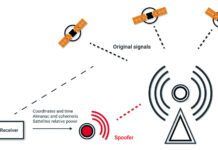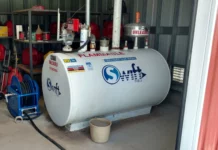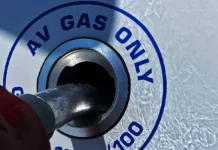Under the Unleaded Avgas Transition-Advanced Rulemaking Committee (ARC)’s recommendations, it will be at least 11 years before a suitable replacement (or replacements) for 100LL is approved. Total cost could reach $73 million with $60 million having to be approved by Congress. Despite the many pitfalls outlined in the report, the authors try to strike a hopeful tone: “We are in fact very encouraged that a satisfactory solution will be deployed in a timely manner and none of us will see our aircraft or our operations significantly compromised.”
A team from Harvard University has developed a treatment for metal surfaces that will keep them free of ice and frost, according to the Harvard Gazette. The Slippery Liquid Infused Porous Surfaces (SLIPS) uses nanostructures to create an ultra-smooth, slippery surface. “This new approach to ice-phobic materials is a truly disruptive idea,” said Joanna Aizenberg, leader of the research group. “We are actively working with the refrigeration and aviation industries to bring it to market.”
The FAA is planning to omit the requirement for steady, red marker lights on some types of towers and antennae to reduce the toll on migratory birds. Radio World reported that a federal study has shown that eliminating the red lights or making them flash, while maintaining the bright, white flashing lights on towers, will reduce the number of “avian fatalities” without increasing aviation fatalities. “The results showed that flashing the steady-burning lights was acceptable for small towers (151 to 350 feet in height) and that they could be omitted on taller towers (over 351 feet) so long as the remaining brighter, flashing lights were operational.”
SavvyAnalysis.com is a free (and ad-free) web service to help diagnose and troubleshoot engine problems. The system, developed by Mike Busch of Savvy Aircraft Maintenance Management Inc., works to graph and analyze piston-engine data collected from “virtually all” existing engine monitors, according to Busch.
The Solar Impulse completed its two-stage flight from Switzerland to Morocco, landing just before midnight in Rabat after a 19-hour flight from Spain. With team leader Bertrand Piccard in the cockpit, the aircraft reached 27,000 feet and averaged about 30 mph on the trip.
In a deal worth up to $9.6 billion, which the company said is the “largest private aviation order in history,” NetJets ordered 100 jets from Bombardier (75 Challenger 300s and 25 Challenger 605s) and 25 Citation Latitudes from Cessna. NetJets also optioned another 300 jets. The order expands NetJets’ own “Signature Series” line of aircraft, which the company helped to design.
JetBlue Airbus A320 spends four hours circling as pilots deal with dual hydraulic-system loss; aircraft landed safely … Air Force awards Lockheed Martin a $19 million contract for backup O2 systems for F-22 Raptors despite unresolved issues with the aircraft … SpaceX launched a spacecraft into orbit, docked it with the space station and recovered it … Francis Gary Powers posthumously awarded the Silver Star … Leaders from Brazil and China signed an agreement to build Embraer business jets in China … SR-71 vertical fin shows up on eBay … Researchers at University of Illinois at Urbana-Champaign create a wing-flapping micro air vehicle (MAV) that can land autonomously by perching … Avionics icon Ed King, who in the 1950s started King Radio in his basement, died at age 90 … WingX Pro for iPad now offers track-up Aeronav charts … 1977 Piper Seneca mounted between steel posts from its wingtips became a sculpture called “How I Roll” in New York’s Central Park … For breaking news in general aviation, log on to www.avweb.com.




